Ruiner Review
What a Winterbeaut
I’ve come up with a new word to describe media like Ruiner: cyberpulp. As in, cyberpunk pulp. That’s not the clanging condemnation it sounds like, don’t worry; I just felt it was about time we acknowledged that cyberpunk, as a genre, has finally grown old and distinctive enough to develop a rather silly narcissistic streak. The iconic aesthetics of the likes of Blade Runner, Akira and Ghost in the Shell have been melted down and recycled so many times that they have taken on their own identity, independent of their thematic roots, concerned not with radical social upheaval through the introduction of new technologies, but with maintaining the look. Mirror shades, long black coats, neon signs, hackers, cyborgs, rain-slicked Tokyo streets. We’ve fallen in love with our own dystopian visions, dreaming of endless nights and chrome bodies, and that’s just so perfectly us. You can’t help but smile at such a peculiar brand of optimism, and I can’t help but smile at Ruiner.
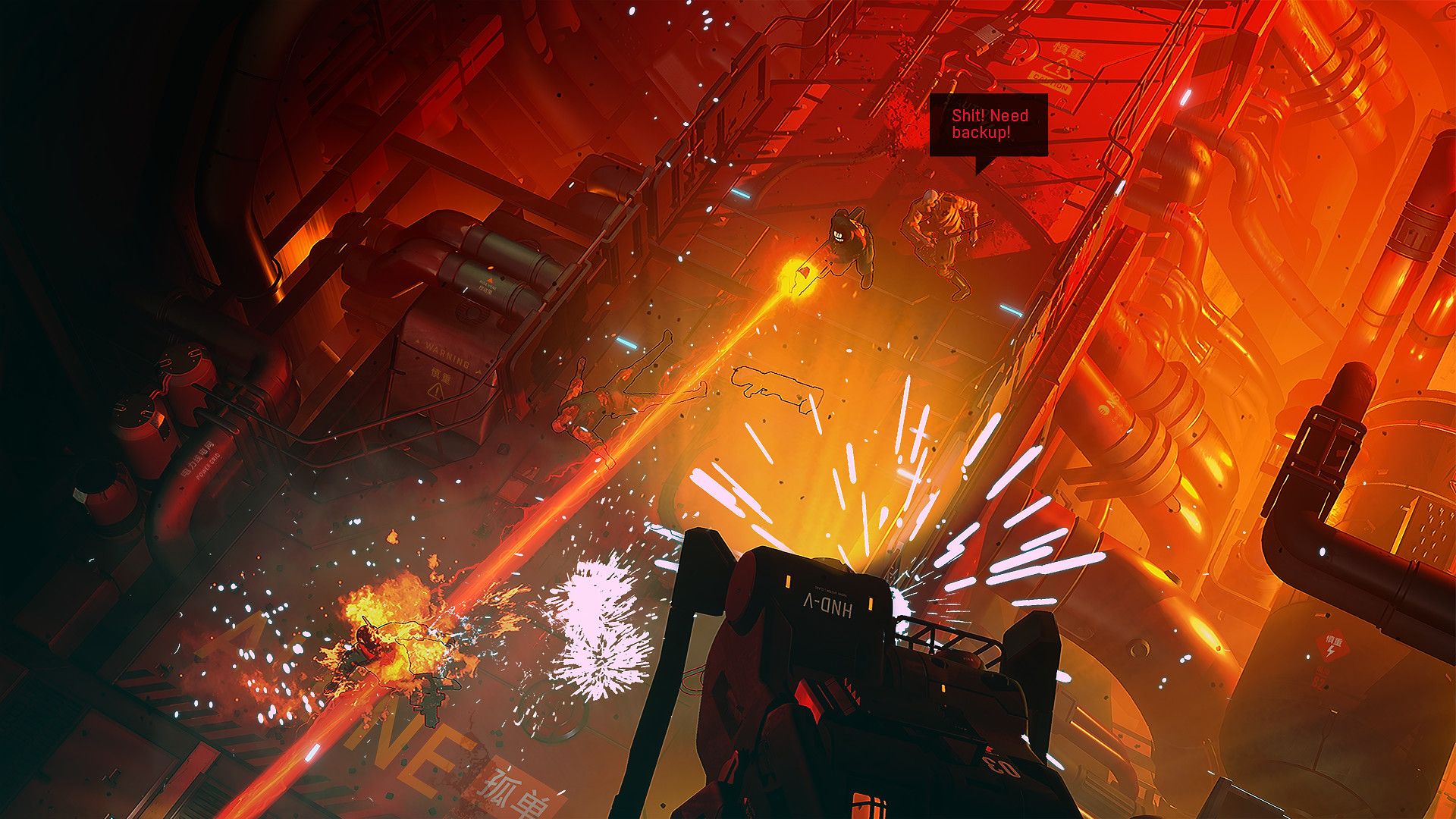
It’s preposterously cyberpulp: obsessed above all else not with communicating sci-fi ideas or exploring a near-future society, with the concept of simply being cyberpunk. Is that vapid? Derivative? Dead-end? Yeah, maybe a little bit. But you can’t deny that it oozes cool.
So, it’s the cyberpunk future. I’m going to leave my description of the setting at that, because it already tells you everything you need to know. You play a mute, faceless man in an LCD-covered mask that was—in some nice, distant, well-lit boardroom full of comfortably isolated executives—probably intended to display “^____^;;” faces or a funky music visualiser or something. Ever since a hacker momentarily hijacked your brain and nearly got you killed, though, it’s just started displaying oddball video fragments and murderous messages—which I’m sure is nothing to be concerned about. You’re on a desperate search for your brother, who is missing, or kidnapped, or possibly not even real at all, and you’re being guided by another hacker known only as “Her”, who acts far too sweet, upbeat and selfless to not have an ulterior motive or three. What’s special about you? Apart from the mask, and a sweet jacket, it’s not entirely clear, but there’s no denying that you’re handy with a lead pipe and a gun. Unnervingly handy.
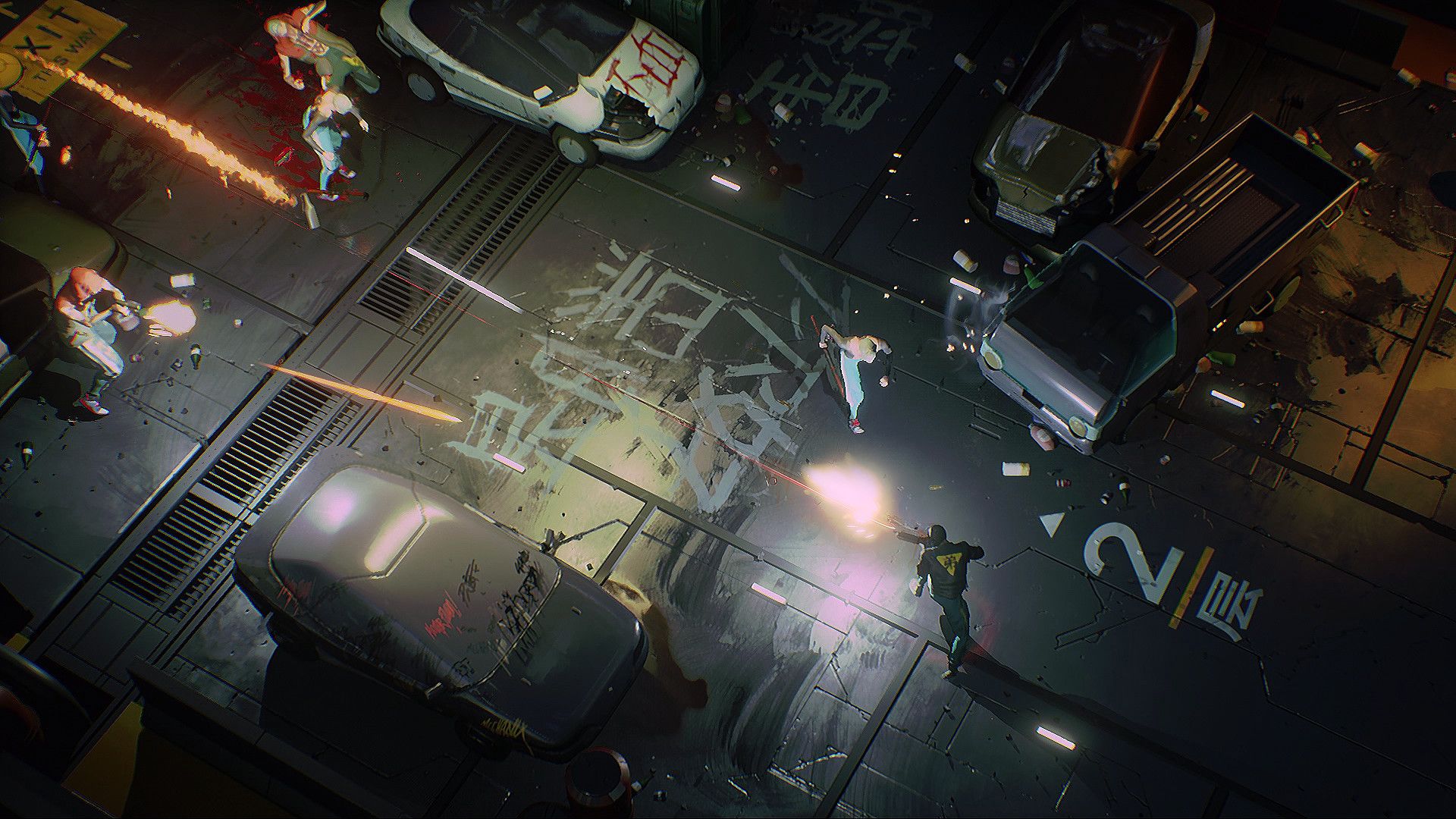
And wherever you go, it seems there’s a bottomless supply of goons, punks, guards and cyber-husks prepared to face you down in brutal twin-stick mayhem. Hotline Miami is the obvious comparison on everyone’s lips—somewhat strengthened, I’ll admit, by you stepping into the shoes of a psychotic masked mass-murderer who does whatever the voice on the phone tells him to do—but Ruiner’s combat formula takes out the unforgiving trial-and-error of one-hit kills and instead just focuses on having everything move unmanageably fast. You. Enemies. Bullets. Melee swings. That sort of thing. There’s not a whole lot of finesse involved in dashing around frantically hammering the triggers, grabbing weapons at random and pointing them at whatever moves—which seemed to be the strategy I inevitably devolved to at every other turn—but I suspect that the panicky, fumbling, impulsive angle may in fact be the entire point. There’s no room in your electrified lobes for planning ahead or executing elegant manoeuvres, just keep slaughtering until you’re numb all over.
It’s extraordinary, really. I don’t often get actively hateful vibes from a game, but Ruiner pulses with an unmistakeable aura of malignancy. From its speed to its presentation, it’s a game that feels explicitly designed to overwhelm the senses; to give you the barest inkling of the draining, dehumanising effects of the horrifying cybernetic future upon on its citizens. Information flashes up on screen, distracting and disjointed, gone before you’re able to fully parse it. Punks appear out of nowhere and are swiftly brutalised, absurd fountains of blood barely noticeable in the crimson glow. Augmented assassins dash around in the dark, impossible to track, hailing bullets down as you lash out like a wounded tiger. Everywhere you go, it’s poorly lit, disorienting, samey, harsh and a teensy bit nauseating, like being locked in a car boot with a packet of lit firecrackers. And I love it. I love that the game so deliberately turns ugly like this; that it leaves the romantic neon-glazed streets far behind and forces your head under the surface, gleefully watching as you sputter and thrash around. It’s draining, yet cleansing, like visiting the dentist and trying not to swallow the bloody salivary soup that gradually builds up in the back of your throat.
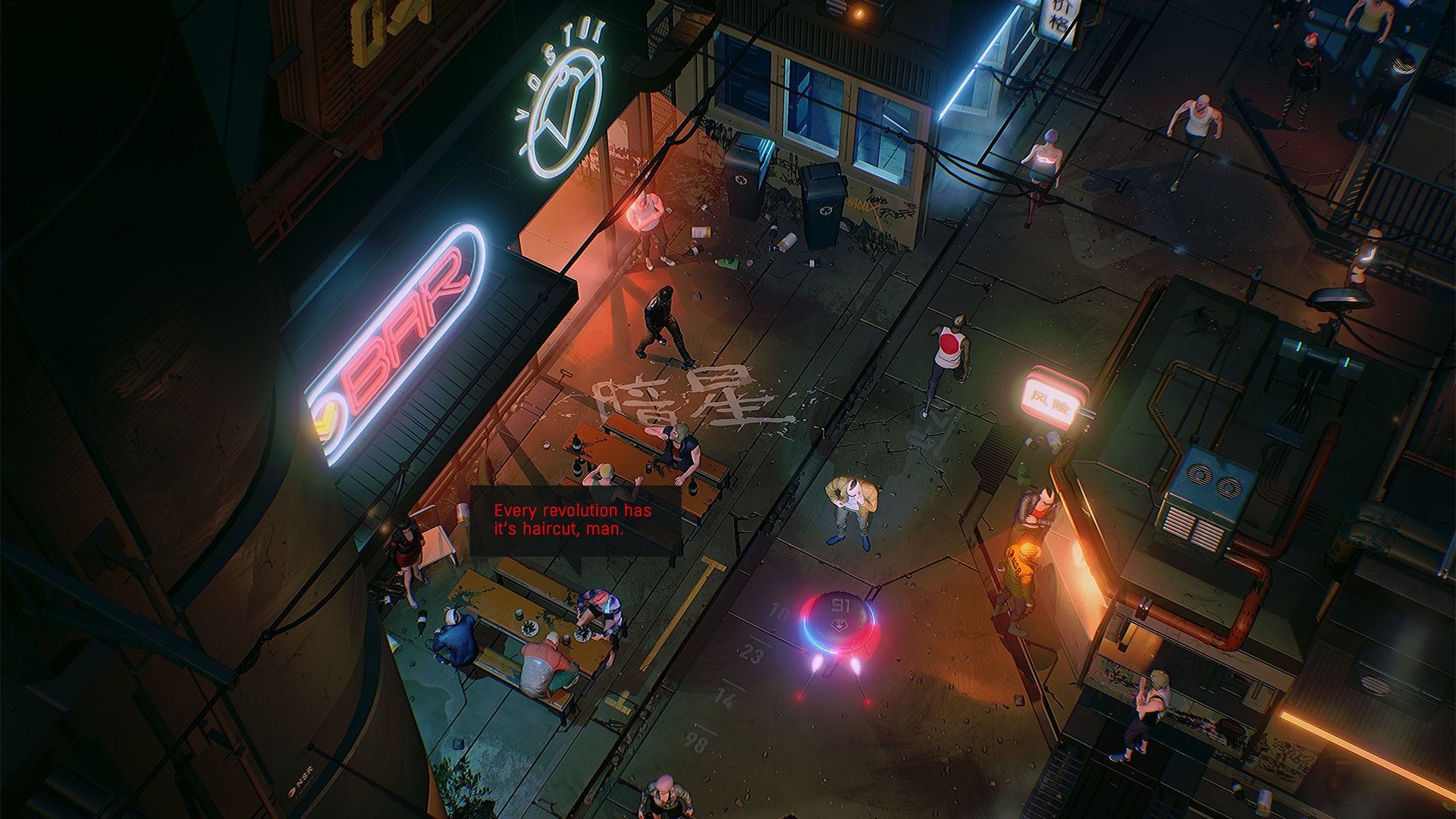
And then it passes, just like that. You beat the level, the sensory overload subsides, and you emerge, blinking, back into the midnight buzz of the hub: Rengkok South. Taken on its own, it’s not much more than a stereotypical little slice of inner-city cyberpunk-opolis; a decaying rain-slicked dead-end district with nothing going for it besides a decent night-life and some inventive lighting solutions. Initially, like more or less everything else in the game, it comes off as more interested in exemplifying the genre than having its own identity or sense of place, ticking off boxes labelled stuff like ‘decadent nightclub’, ‘steamy sushi bar’, and ‘wise old Luddite hag’ with an almost cynical air. Only after surfacing from your exhausting ventures, smelling of blood and plasma burns, do you get an inkling of why cyberpunk has film-noir roots; why its protagonists are just as likely—in some peaceful interlude—to lean against a railing overlooking the sprawl, light up a cyber-cigarette, and monologue. It’s not out of some misguided urge to romanticise the state of the world, but out of gratitude for the momentary respite—and over time, I grew grateful for Rengkok South too. There’s not much to do, unless you count collecting baubles and eavesdropping on the dregs of society, but the opportunity to unwind, breathe, and just occupy a space where people live relatively ordinary lives—where the floor isn’t slippery with gore, where the air isn’t ringing with gunfire and blaring alarms—is a welcome one. Normality is all relative, I suppose.
That’s the thing about Ruiner, I suppose: a lot of the things I could legitimately criticise it for in a vacuum are important—if not outright critical—as a means to an end, to make it a properly satisfying and cohesive experience. Yes, the levels are often padded with meaningless corridors, easy to get turned around in and darker than a Victorian coal mine, but what’s even the point of descending into the industrial guts of a future megacity if you don’t feel dwarfed and alienated by its cold, utilitarian superstructures? Yes, the combat is difficult to parse and sometimes outright impossible to keep up with, but where would that brutal, messy, seat-of-your-pants experience be if you were able to stay on top of everything just like that? Sometimes a bit of roughness and friction is for the better, especially when it scratches such a particular itch so well.
So, let’s turn to aspects of Ruiner that don’t have such an easy excuse. On top of throwing increasingly powerful melee and ranged weapons at you over the course of the campaign, Ruiner also lets you unlock skills with accumulated Karma—it’s just their word for experience points, don’t worry—and augment them with linear chains of upgrades. While the system itself is perfectly serviceable—if a little dull, thanks to the lack of branching upgrades—I’m not so confident in the skills themselves, many of which seem thoroughly unappealing. There’s one that lets you call in a supply drone with your choice of weapon, and another that gradually regenerates your health and energy, but slain enemies are veritable McHappy Meals of all three, and willingly throw themselves at you far more quickly. One skill lets you hack enemies to fight on your side, and not to disparage anyone who’s picked this one up—or any of its distant variants in countless other games—but what exactly is the appeal in getting the computer to fight dudes on your behalf? Fighting dudes is the fun part, and besides, it’s me they want. You don’t take a drink out of someone else’s pint and tell them you’re lightening the workload.
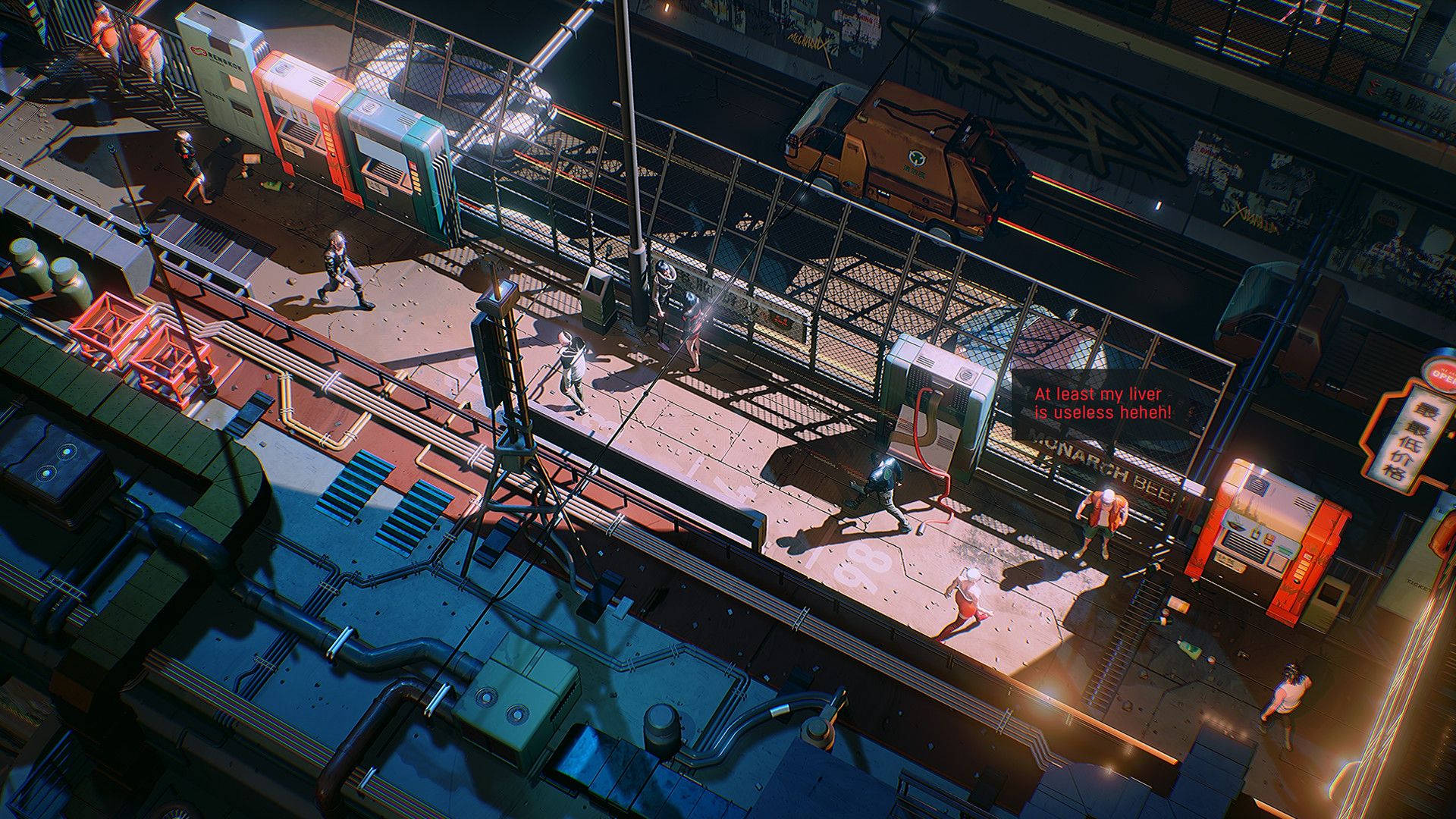
Frankly, though, many of even the best skills in your arsenal are likely to get decidedly little screen time. Like most breakneck action games, Ruiner is about being decisive in the heat of the moment, and when given a choice between immediate violence or the deployment of some tool that might help at some point in the near future, it’s easy to default to “oh, let’s just bloody shoot them”. With the exception of a few bosses that explicitly require you to use certain skills—a recurring robotic matriarch with a sweeping Dragon Ball Z-tier laser comes to mind—their use cases often aren’t distinctive enough to leap out in the split-seconds of thinking time you have. It doesn’t help that most of your skills are crammed onto the same handful of buttons, necessitating that you juggle them around via a radial menu and severely limiting the chances of developing muscle memory for them. With that said, the game is generous enough to let you remove and reassign skill points any time you wish, so if you don’t like an ability, you don’t have to sit there feeling swindled by a slab of silicon.
Finally, the writing is… well, it’s not necessarily bad, depending on your attitude going into it—remember: cyberpulp—but it’s certainly better if you don’t concentrate on it too hard, particularly towards its conclusion. As much fun as it is to go through a cyberpunk odyssey as abjectly silly and exaggerated as Ruiner’s, it gets increasingly hard to turn a blind eye to the game’s fumbling, juvenile attempts at edginess as time goes on. Gritty dehumanisation is the way of the world here, of course, but past a point it edges into sheer B-movie ridiculousness and ceases to hold any sort of impact. Every single boss is some kind of comically sadistic monster who was experimented on as a child, or developed a taste for human spleens, or had their entire body from the head down replaced with a combine harvester. There’s a sequence where you have to repeatedly electroshock a deformed old cyborg into opening doors for you because he’s too stubborn and evil to cooperate even for a second, and another where you go through an enormous human dumping ground, taking a flamethrower to piles of brain-dead shambling husks who had their lobes fried by years of being used as living virtual reality playgrounds. For a while the game even feels like it’s trying to tie you into some kind of extended ‘dog on a leash’ metaphor, with numerous characters—including your suspicious hacker friend—consistently referring to you as such, but it seems to sort of lose faith in that whole idea somewhere around halfway. I guess vaguely kinky degradation was a bridge too far, huh?
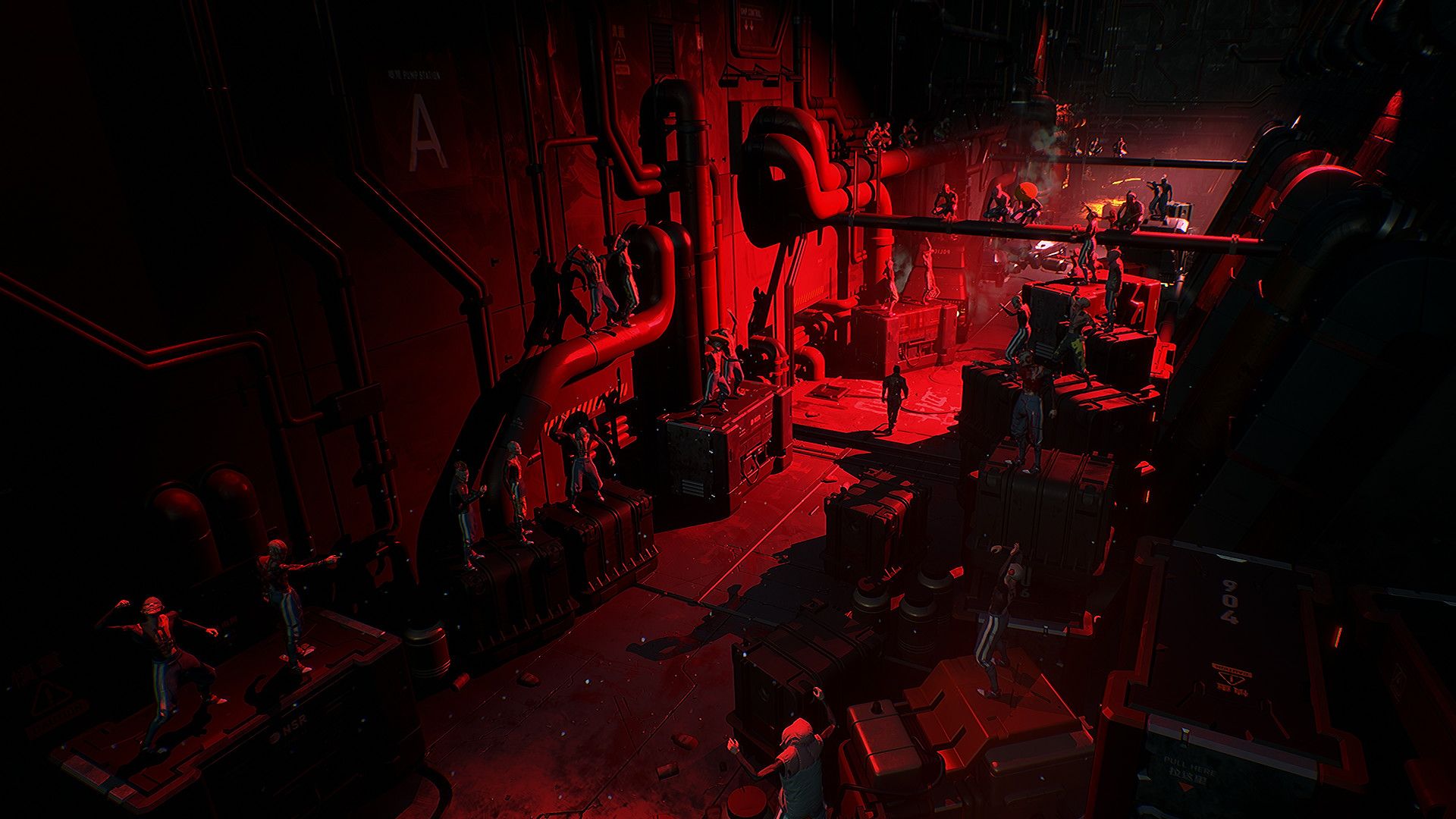
Ruiner is a game that clicks because it’s stylish. That’s not to say that it belongs at one end of some arbitrary ‘style versus substance’ continuum, or that it’s not a perfectly enjoyable fast-paced twin-stick shooter from a mechanical perspective, but what ultimately elevates it to “hey, you should play this” levels is its unyielding, unflappable dedication to being the slickest cyberpunk experience this side of the decade. It assaults the senses with breathtaking precision and coordination; drowning you in oppressive nightmarish industrial mazes before letting you break the surface and inhale the peaceful buzz of the metropolis. Sure, it may be so much schlocky over-the-top genre indulgence at the end of the day, but we could all use a bit of indulgence from time to time—especially the kind with cyborgs and nanoswords.
 Comments
Comments













